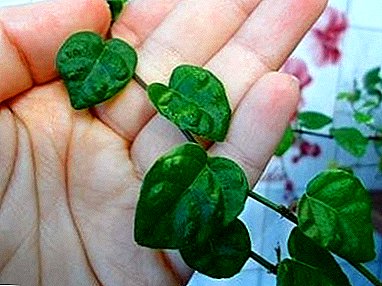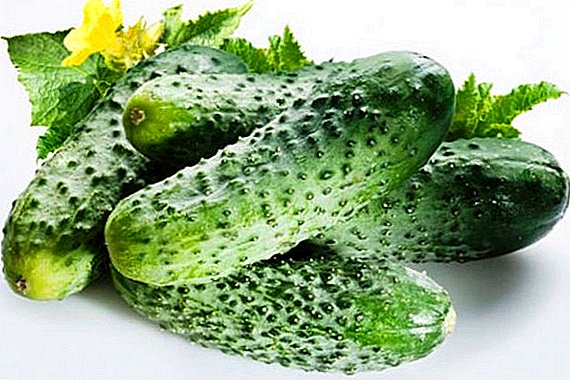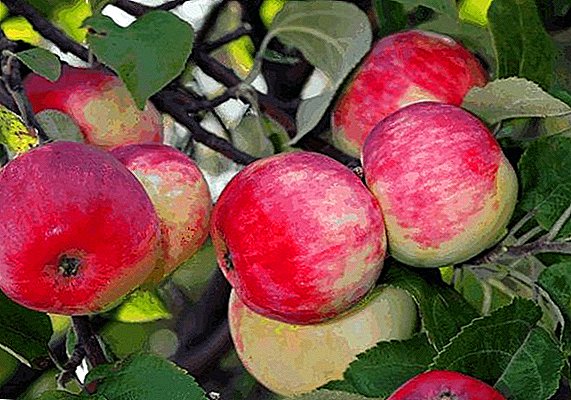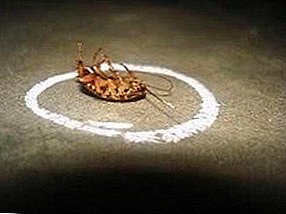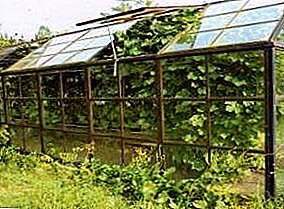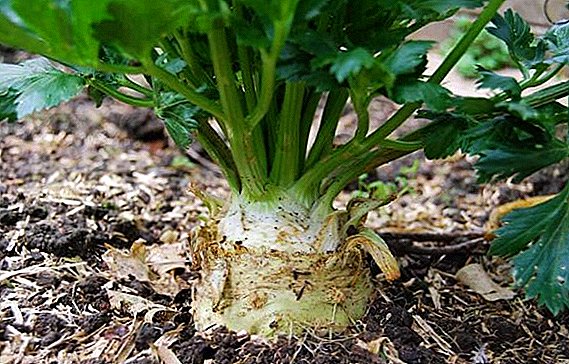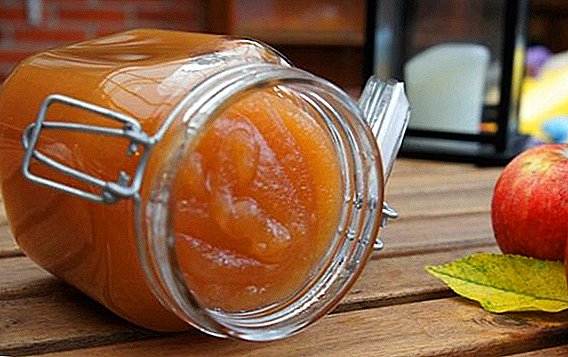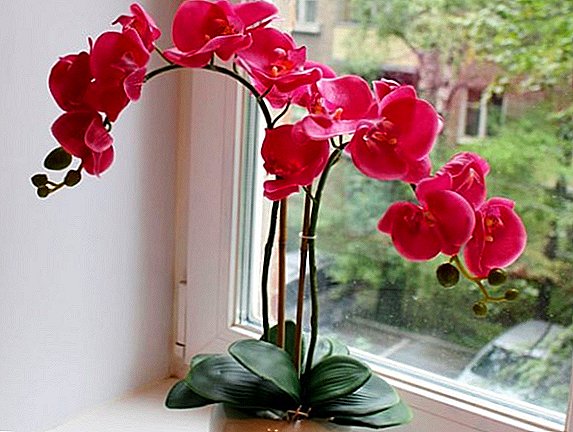 Flowers delight their owners with an unusual color and a pleasant smell that plants emit during the flowering period. When this period of time is over, flower growers reason - the orchid has blossomed and what to do next. There are answers in this article.
Flowers delight their owners with an unusual color and a pleasant smell that plants emit during the flowering period. When this period of time is over, flower growers reason - the orchid has blossomed and what to do next. There are answers in this article.
How to determine whether re-bloom
Dendrobiums of different varieties differ in terms of flowering. The standard duration is from two months to six months. But there are pleasant exceptions: Popular phalaenopsis flowers can please flowers all year round.
Experienced flower growers know that re-flowering is possible only under certain conditions. The first (and most important) - the flower stalk itself must be in perfect health. Dry pedicels excluded. 
The age of the plant also plays a role. If only the purchased plant does not "give out" of the flower arrow, it means that the orchid is in the "young" age. The ability to bloom in different varieties manifests itself at the age of one and a half - three years.
Earlier flowering can ruin too young a plant can simply not recover after such. It is easy to distinguish an adult dendrobium: it must be at least 5 shoots, 7 - 8 is also the norm.
Important! Processing monopodial (growing up) orchids will take a little less time than the "maintenance" of sympodial, the shoots of which form bushes.
 The "scheduled" time has passed, the phalaenopsis has faded, the question arose of what to do next. We list the factors that guarantee re-flowering:
The "scheduled" time has passed, the phalaenopsis has faded, the question arose of what to do next. We list the factors that guarantee re-flowering:- Regular influx of light. If there was no other place, except on the northern window-sill, for an orchid, provide additional illumination.
- A little "stress" will benefit the flower. Enhanced care dulls orchid activity a little, and a second bloom may not occur - everything goes into a set of green mass. Reducing watering and lowering the temperature for several days, you will provoke the appearance of new flowers.
- When the buds are growing, place a plate with water next to it. During the heating season, it is advisable to spray.
- Passion for nitrogen-containing additives has a bad effect on the development of peduncles. If such preparations were introduced too often, the orchid does not bloom so actively, and the withdrawal after flowering passes into another stage.
To make the orchid happy with its flowering, you need to know how to care for a particular species: dendrobium, ludisia, blétilla, phalaenopsis, Wanda, tselogin, miltoniopsis, miltassia, miltonia
What to do with a peduncle, or how to prune an orchid after flowering
When the flowers have already descended and the buds are not observed, it's time to start working with the peduncle. At this time, the plant goes into sleep. It is necessary to calculate the time - for varieties represented in our country, the interval for October - November will be optimal for pruning. 
Did you know? The smallest orchid was found in Ecuador. The diameter of the flower is 2.1 mm, and the petals are translucent and contain only one cell layer.
Beginners such a procedure can be a little scary. We hasten to reassure - this manipulation, if properly performed, is safe for orchids. For young plants, this is very important (as we have already mentioned, frequent flowering can "iznit" flowers).
Different species have their own characteristics that indicate readiness for pruning. For some, the signal is brownish stems, and in the case of phalaenopsis it is better not to tighten - the flowers have faded, you can act. Information on rare hybrids is better to check with the sellers.
Pruning orchids after flowering at home requires a minimum of tools. An ordinary knife or scissors is fine, although it will require some manual dexterity. If there is a pruner on hand, then this is only a plus - by working with it, you do not injure the stem itself, and the leaves will most likely remain whole.  This simple remanent should be disinfected (chlorine solution). At the same time, be careful not to feel then an unpleasant burning fingers.
This simple remanent should be disinfected (chlorine solution). At the same time, be careful not to feel then an unpleasant burning fingers.
An important nuance is that the peduncle is removed only after it has completely faded. This is indicated by yellow, less often - purple or brown color.
Important! Cracks in the leaves indicate that the plant is “overfed” with fertilizers.Consider how to cut orchid peduncle:
- The stem is not completely cut off, leaving a small (about 1 cm) process.
- The core in place of the cut may be hollow. Remember that with further watering there should not get water (then there is a risk of rotting of the stems themselves and the death of the flower).
- For processing and sealing "wounds" use beeswax.
- In the presence of dormant buds, a cut is made a centimeter and a half above the kidney itself. True, new buds and flowers may never appear in this place. This is due to the distribution of nutrients (dendrobium, for example, is easier to maintain old stems than to “overtake” forces on a new one).
We have already figured out how to trim an orchid after flowering, but the focus after flowering is not only the peduncle, but also the roots. Fragile and withered roots definitely fall under the "reduction". A healthy rhizome is different elasticity and gray or green.
Removal of dead roots requires care, it is impossible to cling to normal processes. Such cuts need to be processed - many flower antiseptics are offered in the shops, which prevent infection.
Did you know? In our forests you can find wild orchids. There are about 130 species.Further, the orchid processed in this way needs the increased attention of the owner. Such plants do not require special delights, but care is needed. This concerns, first of all, the state of the soil. The substrate should ensure the normal circulation of moisture and air.

Since pruning is done during the cold season, watering will not be very intense (due to slow evaporation). The main thing is not to allow deep drying or salting of the soil - in this case the dilemma, whether to cut off the orchid peduncle, will occur much earlier.
Orchid transplant after flowering
Orchid owners try not to be zealous with the transfer. This is usually done every two to three years. The fact is that such a process is accompanied by stress in the plant: a disturbed flower will slow down the growth of the rhizome.
Terms of transplantation differ depending on the species, but do not go beyond the spring. Oncidiums, "Venus shoes" and Cattleya move when a new sprout appears (but until the moment when it leaves roots). Phalaenopsis Transplant Signal - Fresh tips near the root.  Sometimes a flower needs salvation. The reasons for the emergency transplant can be:
Sometimes a flower needs salvation. The reasons for the emergency transplant can be:
- rotting roots;
- the appearance of pests;
- the damaged substrate (soil);
- crush (rhizomes do not fit in the pot);
- the plant staggers.
Important! Hard water (with an increased iron content and other heavy impurities) accelerates soil salinity and decay processes.
How to prepare a primer for transplanting a flower
Deciding what to do with the orchid after flowering, in favor of transplanting, we prepare the soil. The easiest way to buy a ready-made substrate in the store. Preparing the soil with your own hands is also easy if you know all the features of a particular hybrid (especially the requirements for moisture).
A set of components for the substrate is known to all. These are bark (deciduous or coniferous trees), peat, bog moss (sphagnum), humus. You can add pieces of perlite, pine cones, expanded clay and polystyrene to this list.
You can collect these ingredients yourself. The main thing is that they do not harm the flower. This means that the bark should only be dry. Expanded clay is needed for drainage, so we take it in the form of rubble (and not sand). 
Next, prepare these components: peat and bark are crushed into small pieces. Leave the moss in the water (for a day) - so get rid of insects. After that, these elements are sure to be steamed with further drying.
Did you know? Some types of orchids in nature live up to 100 years, and greenhouse varieties - up to 70.
Do not forget about the "tare". Transparent plastic pot is perfect for orchids. Holes are made around the perimeter (for water to descend). Well, do not forget about the size.
Clay pots are not bad either, but the roots in such a pot will stick to the walls, and the substrate becomes salted more quickly. There is a plus: moisture and air diverge evenly. Preparing such a "home", you need to moisten the clay, moistened for a couple of hours. Some do disinfection, putting the pot in the oven at the same time at 200 ° C. 
If only the old pot is at hand, treat it with an alcohol solution (70%).
The most popular soil formulations:
- Humus, coal, peat and bark are mixed at a ratio of 3: 1: 1: 1. Suitable for orchids that require constant feeding.
- Option to lower the capacity. Even easier - charcoal "mix" with pine bark (1: 5), which gives a good air circulation.
- Pine chips, chopped sphagnum and coal (5: 2: 1). Suitable for plants "living" on the blocks.
- For phalaenopsis growing in low humidity conditions, add a third of the moss.
Important! Ready substrate should not be compacted.
Orchid transplant
The soil is ready, take the flower. Carefully remove the plant from the old pot, shake the soil from the roots. Rinse the roots themselves in warm water and inspect. Rotten roots are pruned to a "live" place (remember how to prune an orchid after flowering). It would be good to treat the cut with an antiseptic (crushed coal will do).
The transplant itself is done like this:
- Partly fill the pot with a prepared substrate (about a third, expanded clay, expanded foam or pieces of granite will be suitable for drainage);
- Lay the roots and gently pour them with soil inside and out. Place a piece of foam under the base to avoid waterlogging;
- Then gently press the rhizomes and cover with soil. The so-called aerial roots should remain above the surface (like the sheets).
- If the orchid after the transplant began to fall out (which is not excluded due to the removal of the roots), then it can be fixed with a wooden plank.



Now this time-consuming operation is completed, time to take care of the care.
Features care in a dormant period
The rest period of orchids falls on the cold season. Therefore, the requirements of the plants in this period are different from the summer "requests". Consider what does orchid care after flowering mean?
The question of watering is solved simply - by reducing. The substrate should dry out a little. The standard break between watering plants does not exceed one and a half weeks. Water should flow down. For orchids located on the cold side, there is a risk of overcooling of the roots, so the drainage should be at a height.
Did you know? In nature, there are species of orchids that bloom for only a few hours.

Prolonged hypothermia is fraught with the appearance of fungus and bacteria on the rhizome, so ensure the drying. To insulate the pot, place a foam sheet or place the plant in a container with a high bottom.
When growing different types of orchids, you may encounter problems such as diseases, pests and sticky drops of orchids.Spraying in winter is undesirable for most hybrid varieties. Stagnant moisture provokes the appearance of rot. On the other hand, excessively dry air (up to 40% humidity) creates conditions for the appearance of pests. To avoid such misfortune, periodically turn on the humidifier. In the future, this will facilitate the solution of the problem of what to do with the peduncle after the orchid blooms.
The temperature from +15 at night to +23 in the afternoon is considered comfortable. A drop of 5 - 6 degrees speeds up the flowering process. It can be adjusted by occasionally opening the window. Speaking of airing. This is a useful procedure, but you cannot leave a flower in a draft (otherwise it will just freeze over). 
With light mode, too, without too much difficulty. Additional lighting (usually a fluorescent lamp) is placed at a height of 20 cm relative to the orchid. Above 30 cm - this is another extreme. The main thing - do not put too powerful searchlight (enough 60 watts).
Important! The leaves of the plant in conditions of "light hunger" stretched out and acquire a dull shade.
Feed fertilizer is done in the winter no more than once a month, and even less. A short day, relatively low temperatures - and the flower "digests" top dressing longer than in summer.
After reading this article, an aspiring grower will see that even the most labor-intensive work to care for him is on the shoulder. The orchid has blossomed, how and what to do with the arrows, transplantation and peculiarities of the rest period - all this is solved without any special difficulties.


